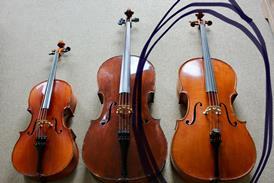A 1704 Stradivari has been replicated using CT scans – but as Christian Lloyd points out, the technology could already be old hat
There’s been plenty of media interest in how, using computed tomography (CT) imaging, a team of experts has succeeded in creating a reproduction of the 1704 ‘Betts’ Stradivari. Anyone who’d like a more in-depth insight into the project (which The Strad has been following for some time) might like to download the article we ran 18 months ago, penned by one of the experts involved: professional violin maker John Waddle.
Led by radiologist Steven Sirr, the team presented its findings to the Radiological Society of North America on 26 November. They’ve made available some fascinating resources, including this ‘woodworm’s-eye view’ of the interior of the ‘Betts’ which highlights the contours in a host of colours.
But science doesn’t stand still and already the technology used to create this violin could well be superseded. ‘Synchrotron radiation microtomography’, which employs equipment developed for particle accelerators, has already been used to discover the tiniest secrets contained within a 1753 Guadagnini. We’ll be reporting on the process and its ramifications in our upcoming January 2012 issue, which takes ‘fresh thinking’ as its theme. Meanwhile, Italian speakers who can’t wait to see the article can get a sneak preview here.
There’s no limit to the fresh thinking and new discoveries in the string world right now. Researchers have used motion-capture technology (best known for turning people into hobbits) to study a violinist’s bow movements in microscopic detail. And a new method for artificially ageing wood 300 years is now being used to make €15,000 violins. It’s fascinating to witness the myriad ways in which one of the age-old crafts is still developing in the 21st century. Look out for the January issue to find out all about it.


























No comments yet